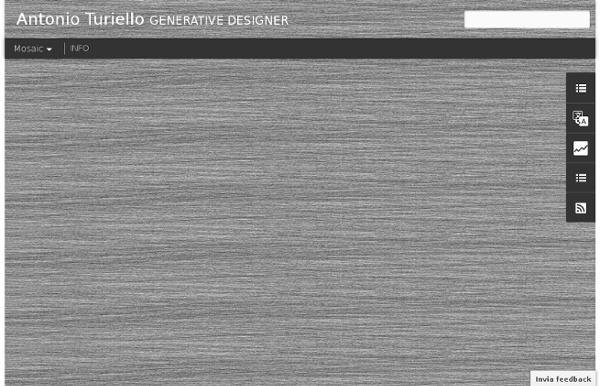



The Grasshopper Primer - Second Edition The second edition of the Grasshopper Primer is out and it wouldn't have been possible without the tremendous contribution from Rajaa Issa. Rajaa is a developer at Robert McNeel and Associates and is the author of several other Rhino plugins including ArchCut and the ever popular PanelingTools. This revision provides a much more comprehensive guide than the first edition, weighing in at almost 160 pages with over 70 new pages dedicated to creating your own customized scripting components. This printing coincides with two events; the first being the new release of Grasshopper version 0.6.0007 which proves to be a giant upgrade to the already robust Grasshopper platform. Source Files:The Grasshopper Primer_Second Edition.pdf (size: 10.7mb - right-click and select 'Save Link As' - adobe acrobat needed) Primer Source Files (size: 193k - right-click and select 'Save Link As' - this is a collection of definitions and Rhino files needed to complete the examples in the primer)
RHINO: GRASSHOPPER DEFINITIONS - RHINO / GH This definition was developed for my final thesis project to generate a louver system based on functional requirements within the building. The performance was then tested in Ecotect. A large part of my thesis design involved invertible arena seating with many moving parts. I used Grasshopper as a means to develop the seating testing clearances, site lines, and many other variables. This definition looks at taking any curved surface, and generating weaving geometry across it. The parametric skyscraper uses Grasshopper to generate the entire structure. My favorite definition to date, this definition generates box designs based on real boxes I crafted in the wood shop while in Grad school This definition extrudes geometry based on their proximity to a polyline attractor. Using a definition created by paramod, I wanted to see if I could edit the definition so that different panels could be combined to create a seamless surface This was one of the first definitions from scratch I ever created.
Tutorials Introduction to Grasshopper Videos by David Rutten. Wondering how to get started with Grasshopper? Look no further. Dario Donato director di SpatialConnection(s), incubatore di ricerca per una creatività matematica, ha il piacere di annunciare il libro: Contaminazioni creative digitali – Trascrizioni di una complessità algoritmica attraverso Rhino.Grasshopper Transcripts of a complexity algorithmic through Rhino and Grasshopper. If you’re looking for a nice collection of Grasshopper tutorials then jump over to Designalyze Here are a series of beginner and advanced tutorials from our friends at Studio Mode... This tutorial series was developed for the Design Studio AIR at the University of Melbourne, Faculty of Architecture, Building and Planning. Essential Mathematics 3rd Edition uses Grasshopper to introduce design professionals to foundation mathematical concepts that are necessary for effective development of computational methods for 3D modeling and computer graphics.
Geometry Gym Rhino ++ Grasshopper – Plethora Project Plethora-Project.com is an initiative to accelerate computational literacy in the frame of architecture and design. It aligns with the "show me your screens" motto of the TopLap live-coding group attempting to get rid of Obscurantism in digital design. Directed by Jose Sanchez Contact me at : jomasan@gmail.com Bio: Jose Sanchez is an Architect / Programmer / Game Designer based in Los Angeles, California.
Computational design CTM.08 – Unpredictable Festival for Adventurous Music and Related Visual Arts Generator.x 2.0: Beyond the Screen 24 Jan - 2 Feb 2008, Ballhaus Naunynstrasse / [DAM] Berlin Workshop / Exhibition / Performance Generator.x in collaboration with Club Transmediale and [DAM] presents Generator.x 2.0: Beyond the screen, a workshop and exhibition about digital fabrication and generative systems. Digital fabrication (also known as “fabbing”) represents the next step in the digital revolution. After years of virtualization, with machines and atoms being replaced by bits and software, we are coming full circle. For artists and designers working with generative systems, digital fabrication opens the door to a range of new expressions beyond the limits of virtual space. "Beyond the screen" explores these new types of spatial constructs in a hands-on workshop, bringing together artists and designers working with code-based strategies for producing physical form. Call for participants